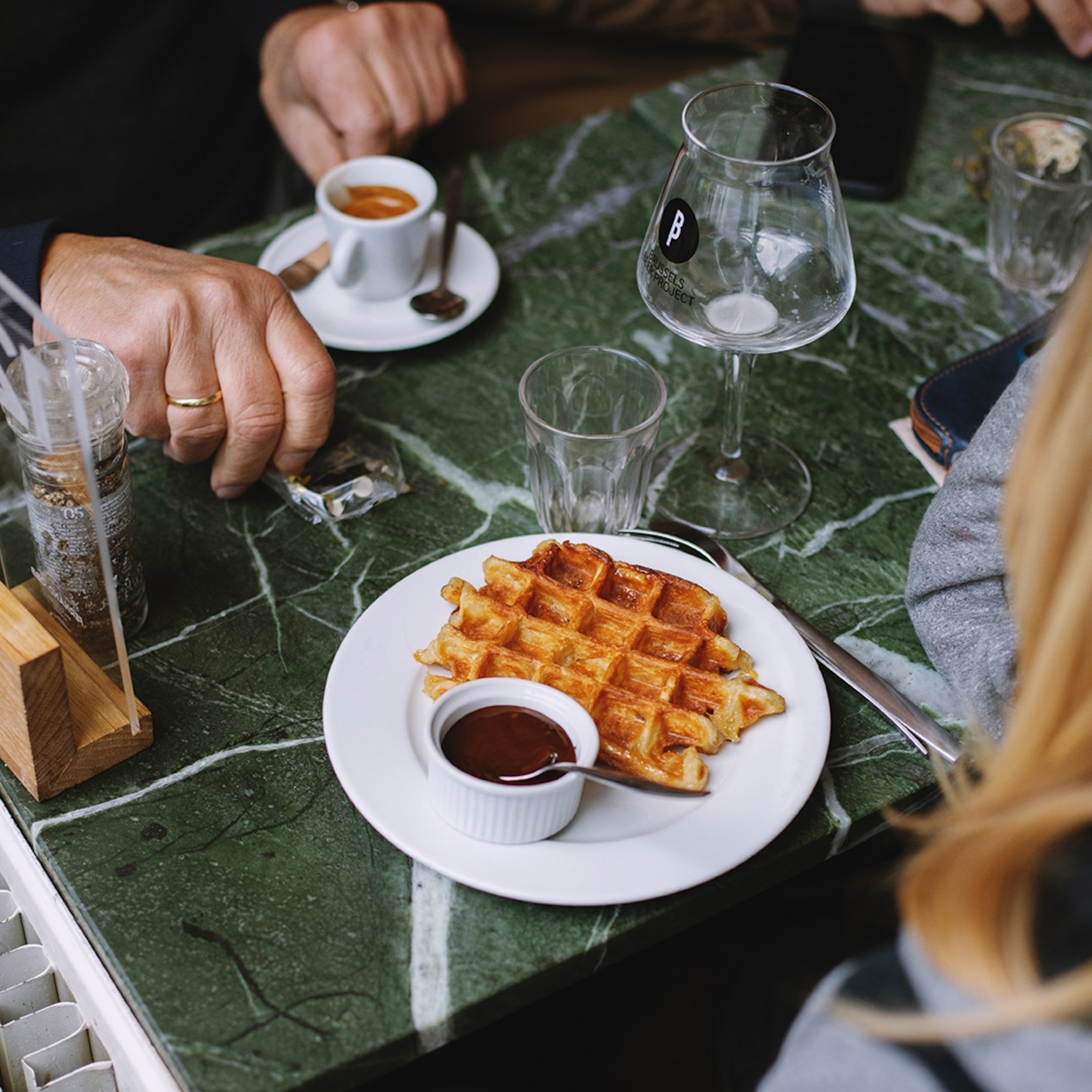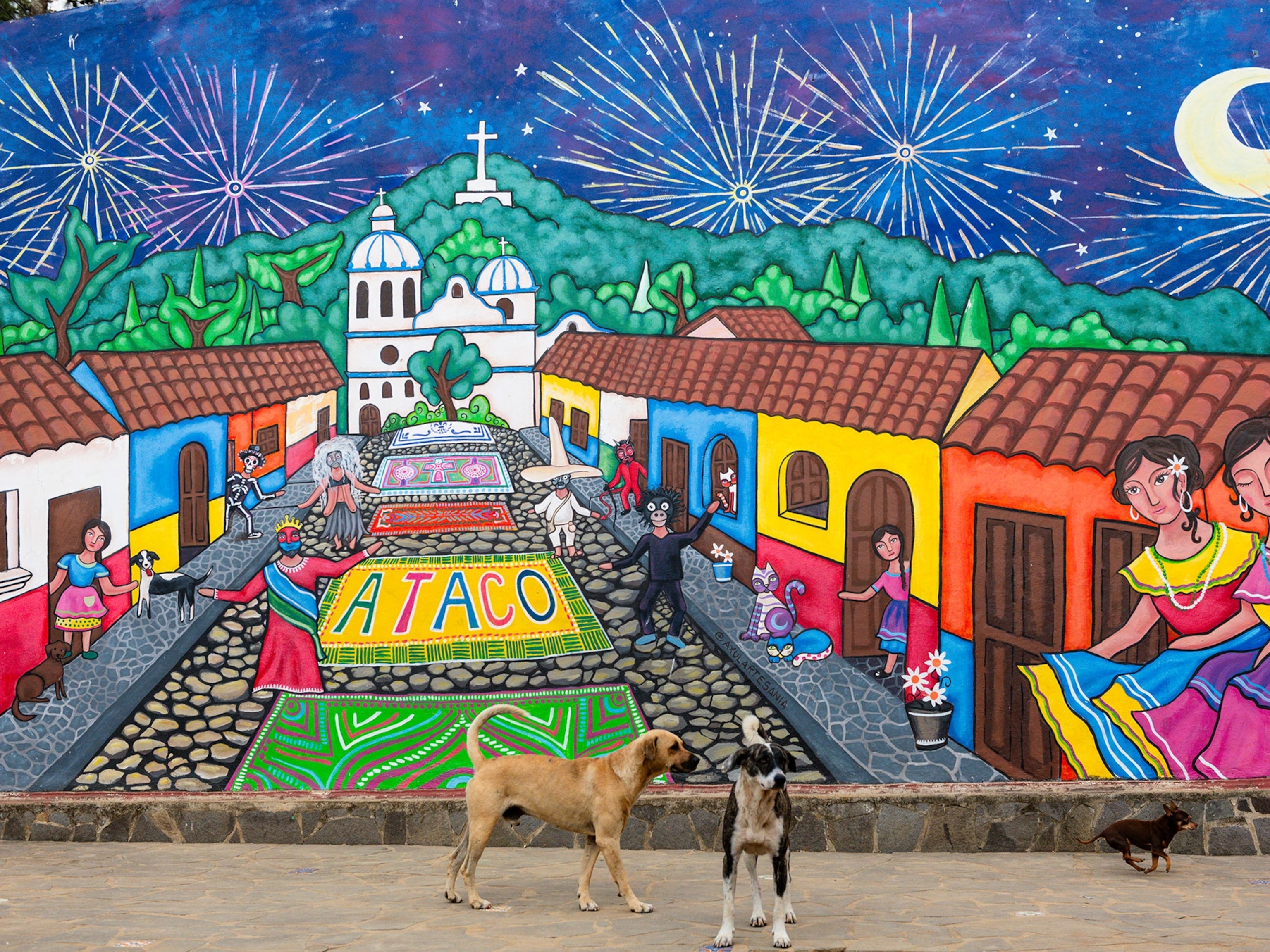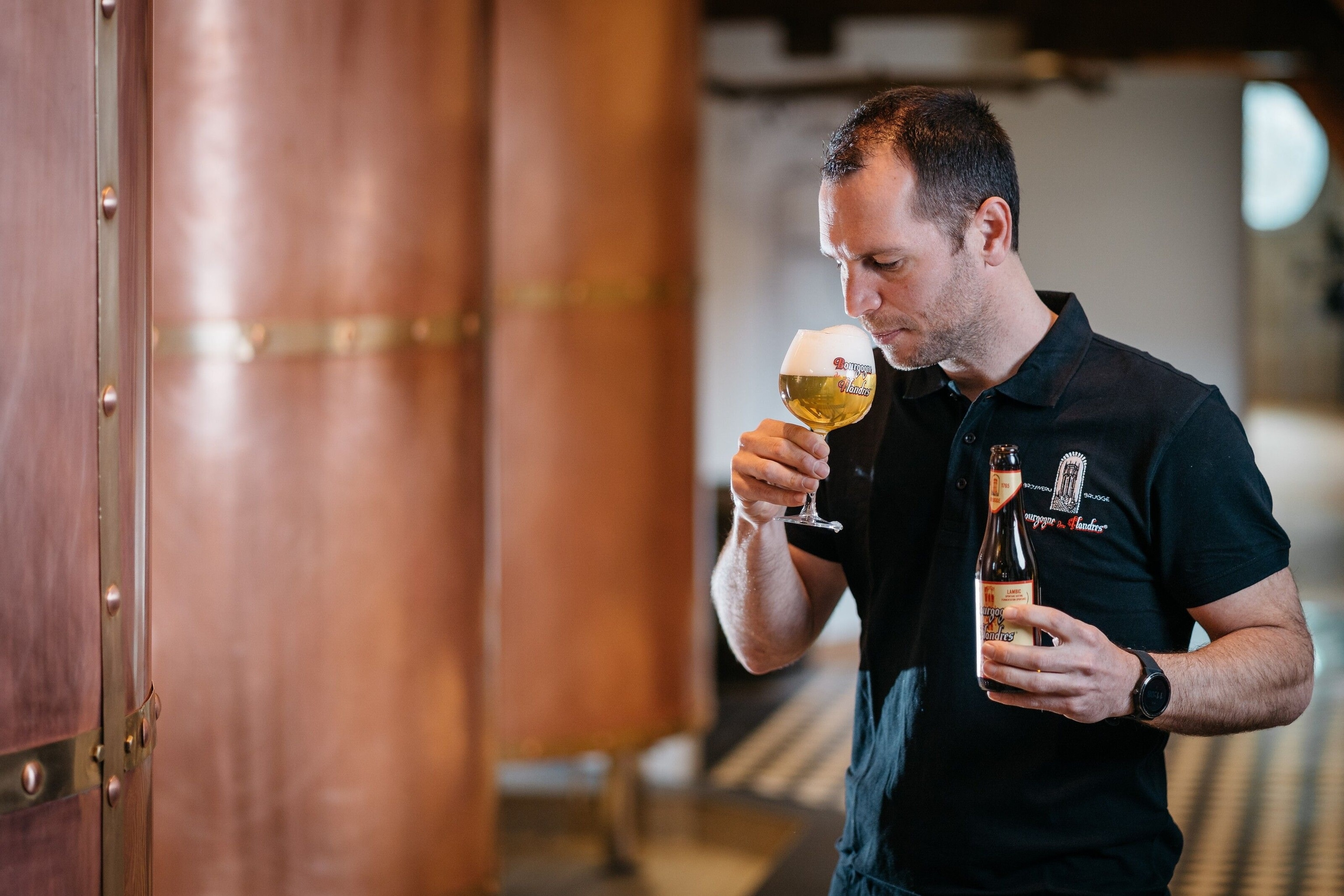
The flavours of Bruges: meet the people behind the produce
From top-quality Michelin-starred restaurants to local brasseries, breweries and 'brown bars', Bruges is a haven for gastronomes. Here, three locals share their passion for the country’s cuisine.
1. Thomas Vandelanotte
Thomas is a master brewer at Bourgogne des Flandres, an award-winning brewery and distillery in Bruges.
I’m the first master brewer in my family. Most of the time, it’s a passion passed through the generations, but in my case, the honest answer is that I just like beer! I studied biotechnology at high school, which delved into the science and mathematics behind how certain products and foods were made, including how to make wine and brew beer. I found it fascinating; I guess that’s what first sparked my curiosity about it all.
Bourgogne des Flandres benefits from a unique, ancient brewing technique known as ‘lambic infusion’ — a blend of a dark, top-fermented beer and a lambic. The latter is an ancient style of Belgian ale produced by spontaneous fermentation, ie: we don’t add any yeast and give Mother Nature free rein. Once fermentation starts, it’s then stored in oak barrels to mature for up to three years. We eventually blend this with our younger, top-fermented brown ale; the result is a mix of sweet and sour flavours, which tastes less acidic than some other Flemish red-brown beers.
Our top-fermented brown ale also has a traditional brewing method. Most modern breweries use stainless steel installations, but we use open vessels, meaning the CO2 can escape and there’s much less pressure on our beer. These two factors cause the yeast to produce fruitier flavours and esters, resulting in our brown beer having a distinctive strawberry and banana taste.
We also have an onsite distillery where we create special Belgian spirits such as genever, the grandmother of gin. It’s thought that the Dutch brought this juniper-flavoured liquor over to the UK, but the first written recipes are in scientific papers written by several Flemish authors, including Jacob van Maerlant, who lived just outside of Bruges. Our brewery aims to carry on this tradition by distilling two unique beer-based genevers: a hopped gin and a young gin with a malty character. The difference between gin and genever is that gin can be produced from any sugar source (so you can have 100% corn- or grain-based alcohol, which you then add your spices to), but genever always starts with malted barley. The taste is somewhere between a whisky and a gin.
Vlissinghe is the oldest pub in Bruges and offers a charming setting for a beer. 't Brugs Beertje is another of my favourites; it’s one of the first, proper beer pubs where they don’t sell any lagers and I also love the authentic posters and bottles on the walls.
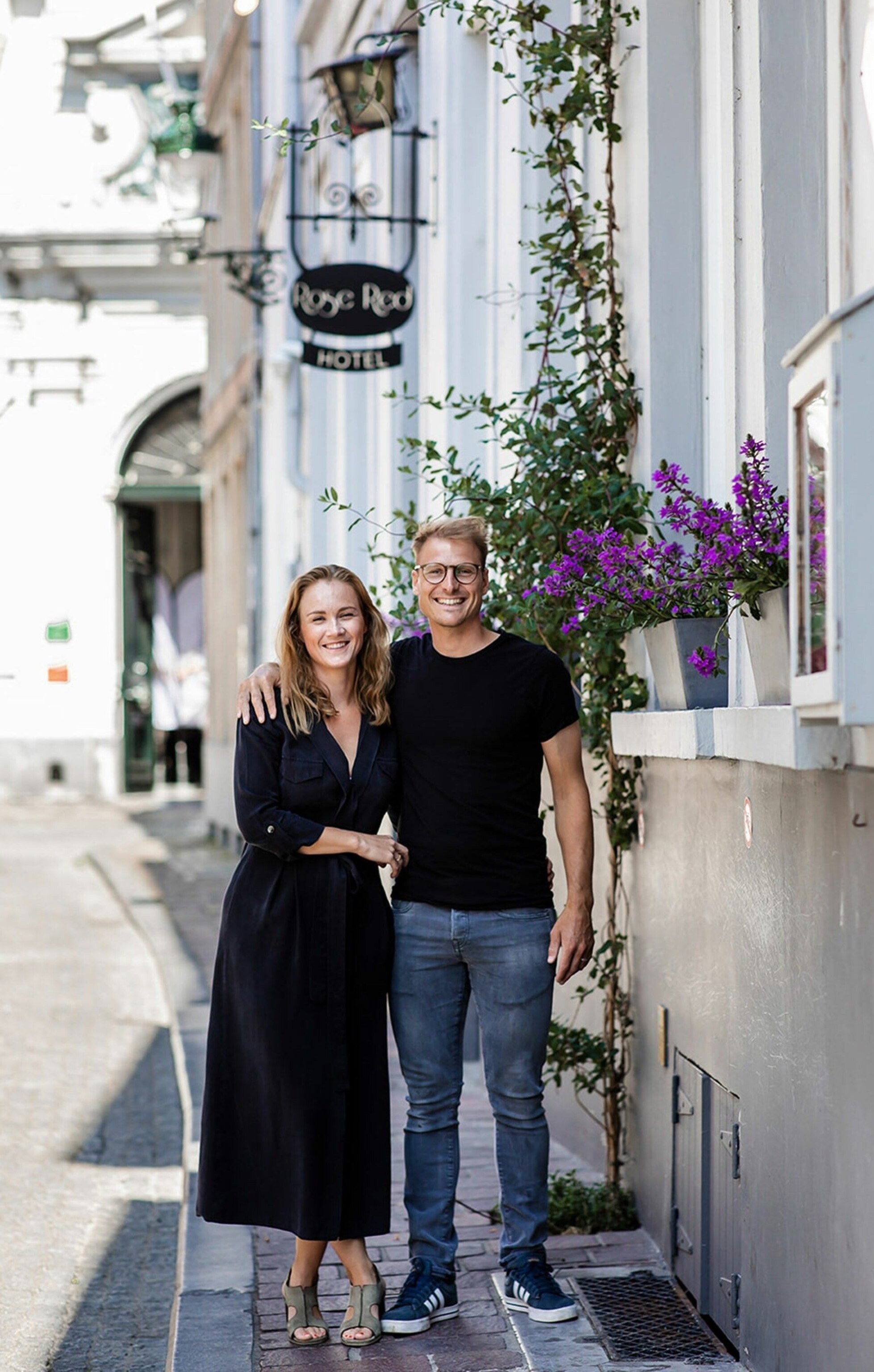
2. Jannetien Veireman
Jannetien is the co-owner of Café Rose Red — a cosy, family hotel with a brown café, located in the heart of Bruges.
Brown cafes are an integrated part of Belgian culture. Flemish to the core, they provide a place for local people to gather over a pint of beer — regardless of class or income. I think the name derives from the dark but cosy, wooden interiors and the nicotine-stained walls and ceilings.
I was born at Café Rose Red and spent much of my childhood here. My parents owned the hotel before me and three years ago, my husband and I decided to buy it off them. I still find it strange to see customers enjoying a drink on the terrace where our old swimming pool used to be.
It was my father who transformed the hotel and restaurant into a first-class beer bar. He wanted to give the small breweries a chance; as a result, we still only stock small Belgian beer producers. Trappist beers [beer brewed by Trappist monks] are our speciality. Our menu includes over 250 carefully selected options, such as fruited and non-fruited lambics to a variety of Flanders red and brown ales.
The historic building, which houses the bar and hotel, dates back to 1625. We have dozens of red roses hanging from the timbered ceiling to give a feeling of intimacy. Lighting and music are also important to us; we have candles flickering on each table and all along the bar.
Bruges is a place you drink in with your eyes. I sometimes forget just how beautiful our city is. We have the canals, the swans, the incredibly historic buildings and quaint, cobbled streets. There are so many pockets of tranquillity outside the city centre, too, such as the four windmills along the water. Just ambling around or opting for a guided walking tour is the best way to soak in all the city’s medieval splendour.

3. Filip Claeys
Filip is a Belgian chef, activist and co-owner of the two-Michelin-starred restaurant De Jonkman in Bruges.
It’s hard to define what Belgian gastronomy is; we’ve had a host of influences from a variety of countries over the decades. If I had to compare it with another cuisine, French is probably the most similar — in fact, it’s often said that Belgian food is served in the quantity of German cuisine but with the quality of French food.
Tomate aux crevettes (tomato stuffed with grey shrimp), is probably our most traditional, Flemish dish. The grey shrimp is a tiny, delicate shrimp, found only in some areas of the North Sea. Stoofvlees (a Flemish beef and onion stew) is another of our specialties. Traditionally made with beer, thyme, juniper berries, mustard and spiced bread, we serve it with French fries and mayonnaise.
I started working in restaurants when I was 13. My parents owned a fish restaurant on the border of France in the 1980s, so I was always around and helping, which sparked my passion for cooking. My father was a master of making sauces; I learnt so much from him. Even now, some 30 years on, I still have customers who remember eating at his one-Michelin-starred restaurant, which means a lot.
I think a chef has to have their own ideas and identity. I worked for two years to find my own cooking style, which included several international trips to places such as Spain, Hong Kong and Tokyo. The latter completely changed my professional outlook. The local products they were working with, such as their Pacific bluefin tuna, put the fish I was working with to shame. When I returned home, I started from scratch and vowed to only source locally and sustainably. In Bruges, we have the North Sea right on our doorstep, which is home to some of the best fish in the world (such as sole, haddock and horse mackerel) — and yet no one was doing anything with it! I lost 40% of my customers when I made this sustainable switch, but it was a fight I was willing to take on.
In 2008, I founded NorthSeaChefs to raise awareness of fish that are not commonly known. I believe we need to learn to eat what fishermen catch, rather than ask fishermen to only catch fish we want to eat and throw away the rest. This group encourages chefs, amateur cooks and consumers to understand various types of fish and how to cook with them.
I’m participating at the upcoming Kookeet Food Festival in Bruges. I think it’s important to come out as a group of chefs and show the world how excellent Belgian cuisine is — the festival has such a nice, relaxed ambience, too. I also enjoy leaving my kitchen to talk and connect with my customers. This year, I’m going to bake aubergines in the juice of shallots over an open fire.
Gran Kaffee de Passage is my favourite restaurant in Bruges for delicious, traditional Flemish dishes. It’s a restaurant but has the cosy ambience of a quintessential brown cafe. The stoofvlees and the fish soup are a must-try!
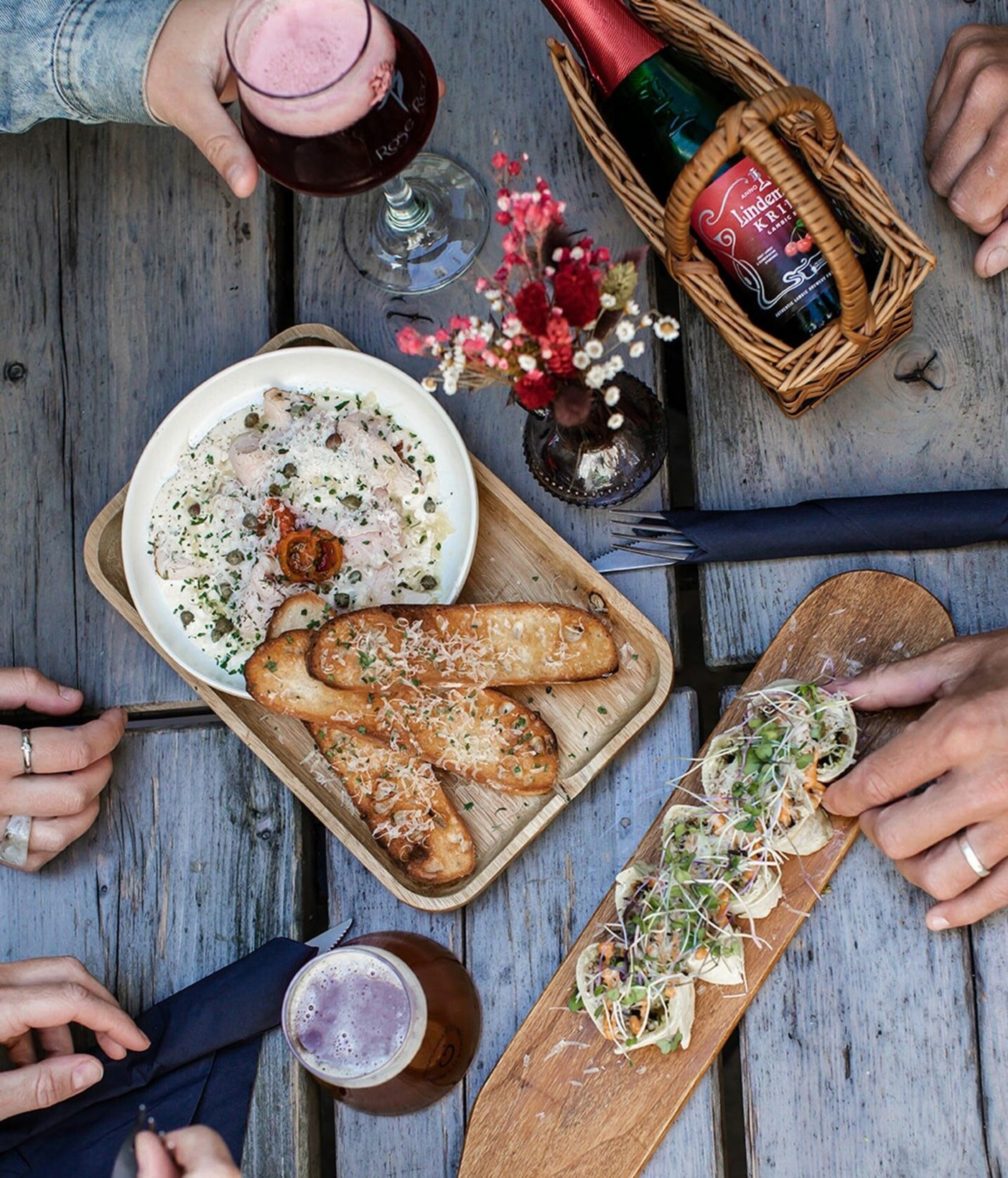
Plan your trip
Eurostar is the pick of the transport options from the UK. Buy a ticket to Brussels and any Belgian station from London St Pancras International. The journey is just under two hours and onward train travel (from Brussels to Bruges) is included in this ticket price. A bus can take you from the station to the centre or you can easily walk; most points of interest are within walking distance in the city. Hiring a bike is also a good choice; there are plenty of rental companies.
Find National Geographic Traveller (UK) on social media

